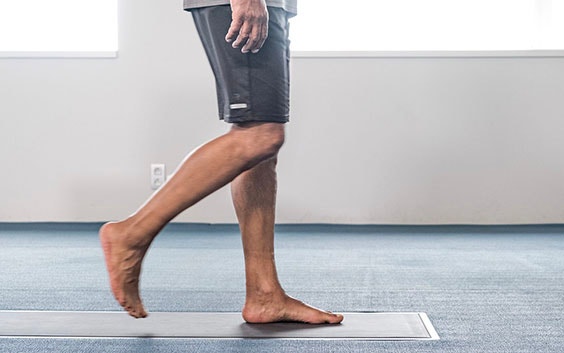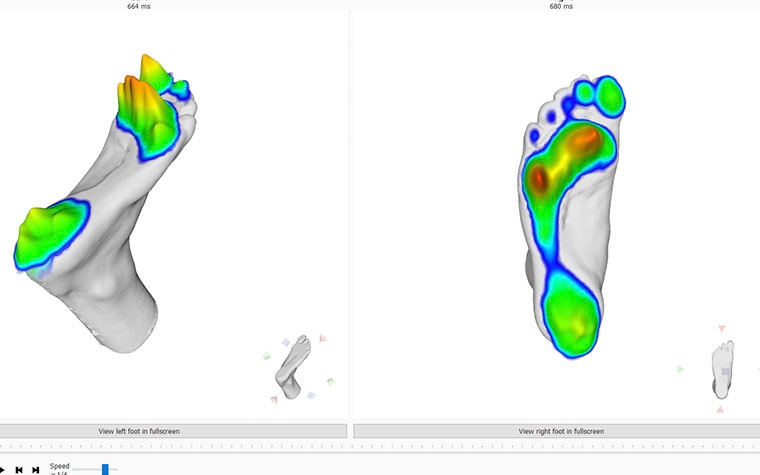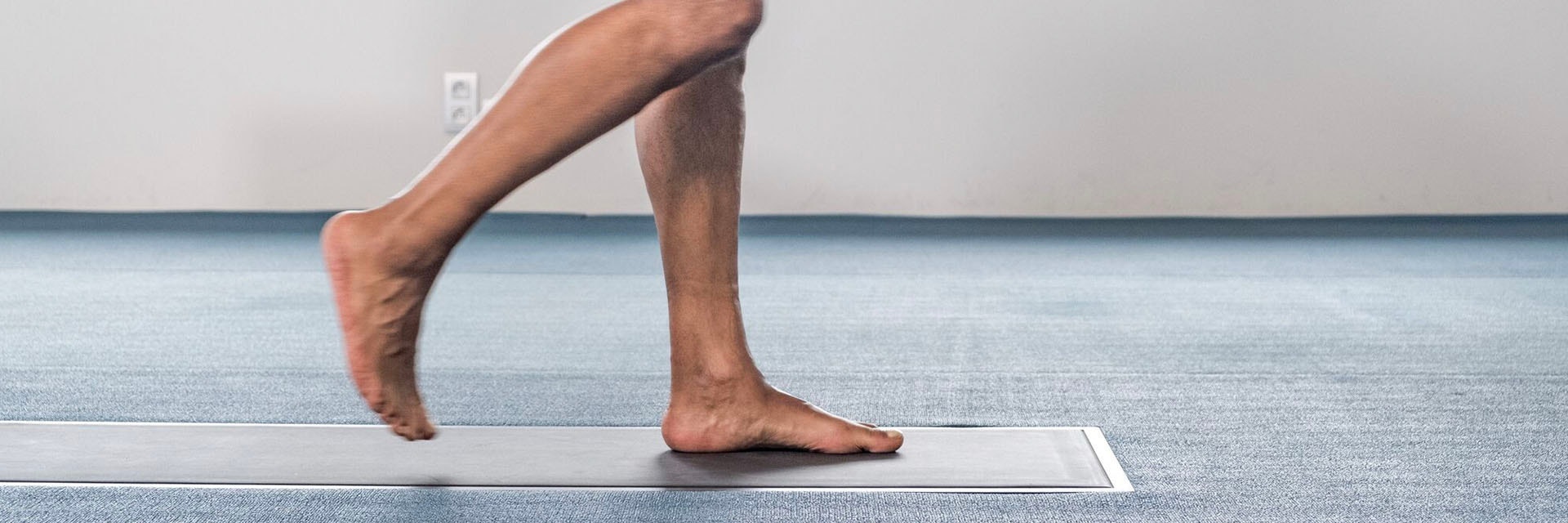EXPERT INSIGHT
Scan More, Scan Faster: Why Researchers Are Fans of footscan 9

Having access to the right tools — both software and hardware — is an essential part of the job for any researcher. When Dr. Sharon Dixon of the UK’s University of Exeter first discovered footscan at a footwear biomechanics conference in 1996, she knew she’d found them. She has used a combination of the analysis software and pressure plate ever since.
Fast forward to 2021, and Dr. Dixon has become well acquainted with the latest version of the software, footscan 9. It has become a key part of her research, with the speed of data collection being the major advantage over previous versions.
Faster than ever
There are a number of reasons for this improved speed, namely in the way researchers can use the system. Instead of having to click ‘save’ every time a participant runs over the plate, Dr. Dixon can watch the steps on the screen and instruct each person to continue until sufficient data is collected, then store it all in one go. When working with large groups, such as the Royal Marinesi,ii, every minute saved is invaluable.
“One of the reasons I was not able to collect pressure data for the full cohort of military recruits in previous projects is because it would have taken too long. With footscan 9, I can collect the information of one person in less than three minutes. Now, we can collect data from up to 60 recruits in two-and-a-half to three hours on a regular basis. I wouldn't have managed a fraction of that with the old system."


Likewise, getting started with footscan has never been simpler. Whether it’s installing the software itself (“Just plug it in!”) or teaching others to use it — a key part of her role at the University of Exeter — Dr. Dixon has a lot of praise for the ease of use.
“It’s very easy. I don’t need to spend time training students or researchers, I just show them once, and they collect data. I think the interface is great.”
From theory to practice
Naturally, being user-friendly is just one requirement for software like this. It also needs to provide results that can be acted upon and corroborated. For Dr. Dixon, footscan has proven to be as effective in the field as it is in the classroom, particularly in the case of her research with the Royal Marines.
In 2011, she began to use footscan in research projects demonstrating aspects of barefoot pressure data that were predictive of lower limb stress fracture risk. These results have helped to support changes in footwear and have provided evidence to support later research.
“Between 2010 and 2012, metatarsal stress fractures were the main problem, and we found that high forefoot pressure increased risk of this injury. But since then, the footwear has changed, and the new boot seems to protect against this injury by lowering the localized load on the forefoot. So we can say, look, we’ve demonstrated this, and so we can provide an explanation for the reduction in this injury.”
Those findings laid the groundwork for the project she began in 2018, collecting data from the roughly 800 soldiers who begin training each year.
“The medical team is very much on board with trying to utilize this information,” she tells us. “This is only possible with the evidence base we have developed over many years.
“They say, OK, you’ve provided us with evidence that these measures have been linked with increased risk, so let’s collect data for everyone that starts the program. Now we routinely collect barefoot walking and running pressure data at the start of Royal Marine training.”
Evidence-backed changes
With a sizeable evidence base taken from a conveniently homogenous group — a researcher’s dream from a scientific point of view — Dr. Dixon began to identify patterns, particularly with the number of tibial stress fractures or other overuse injuries and the potential relationship with pressure patterns. And while she says that much more data is required to confidently act in a preventative manner, previous studies have shown that the potential to do so is there.
While it may be some time before this latest round of data can inspire preventative change, the Royal Marines are already benefitting when it comes to recovering from injury.
“What's really been nice is by doing this collection and working with the physiotherapy team, we've found that this information can support treatment and rehabilitation. So, in addition to using research evidence, we've found that having baseline measurements when they start training has been really useful from a rehabilitation perspective.
“So knowing what this person's foot strike and pressure pattern looked like before they were injured can be used to know what we're trying to get back to, or to identify possible factors influencing the injury occurrence. It's there straight away, as long as you've created that baseline data.”


Getting started with Materialise Footscan Suite
More than 20 years after she first discovered the brand, it’s clear that the decision to start using footscan has worked out well. But why did she choose the software?
“I first purchased the plate system because of the higher sampling rate,” she recalls. “They were 500 Hz compared with the 100 Hz of comparable systems at the time. It’s been the consistently attractive aspect because I’m generally looking at running, so I’m interested in having that higher sampling rate.”
Over time, Dr. Dixon also built relationships with fellow researchers and RSscan founder Jempi Wilssens, both in the UK and further afield in Belgium. This, along with the impressive functionality offered by the footscan software, made it an easy decision to continue using it for so long.
It’s something that both parties will hope continues long into the future, ensuring that Dr. Dixon has the tools she needs, when and wherever her projects take her. For others like her, it’s a clear sign that footscan isn’t only for clinicians — it’s a favorite tool of researchers too, just waiting to be discovered.
Share on:
You might also like
Never miss a story like this. Get curated content delivered straight to your inbox.
